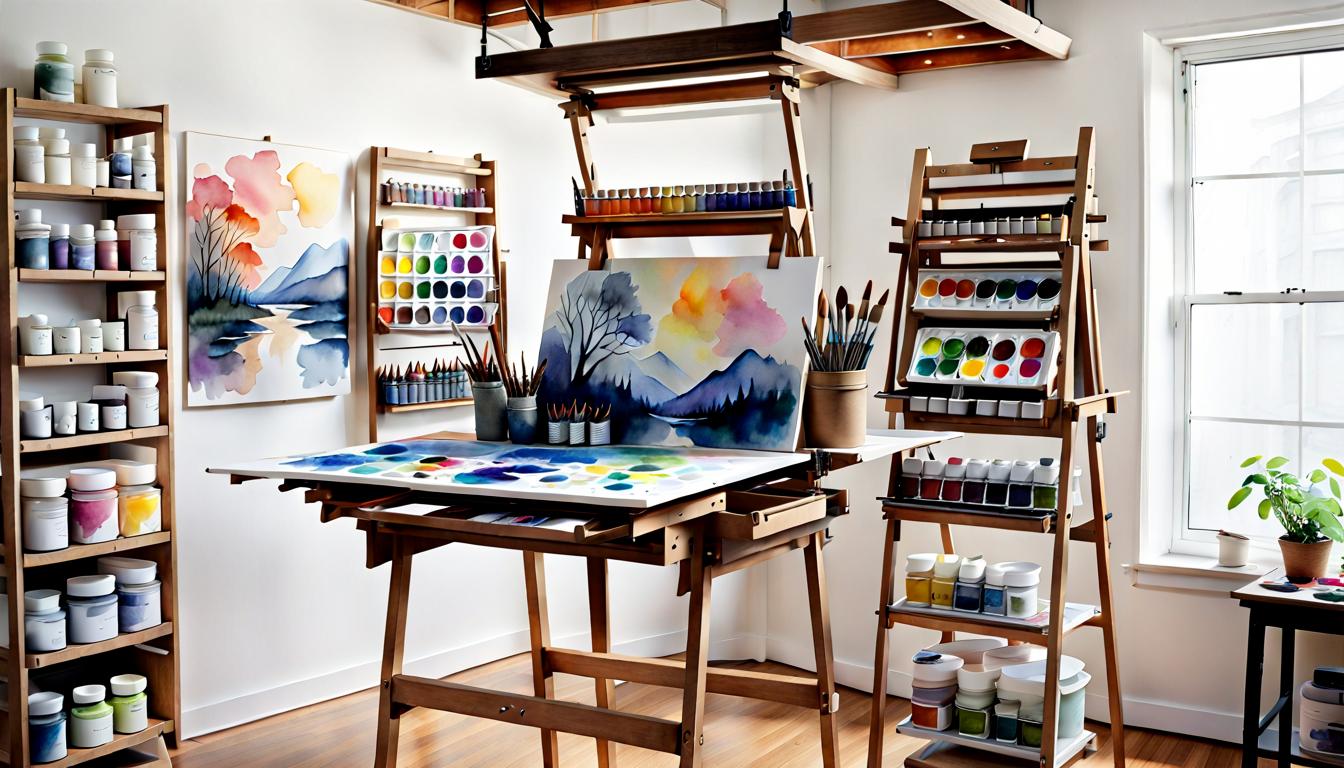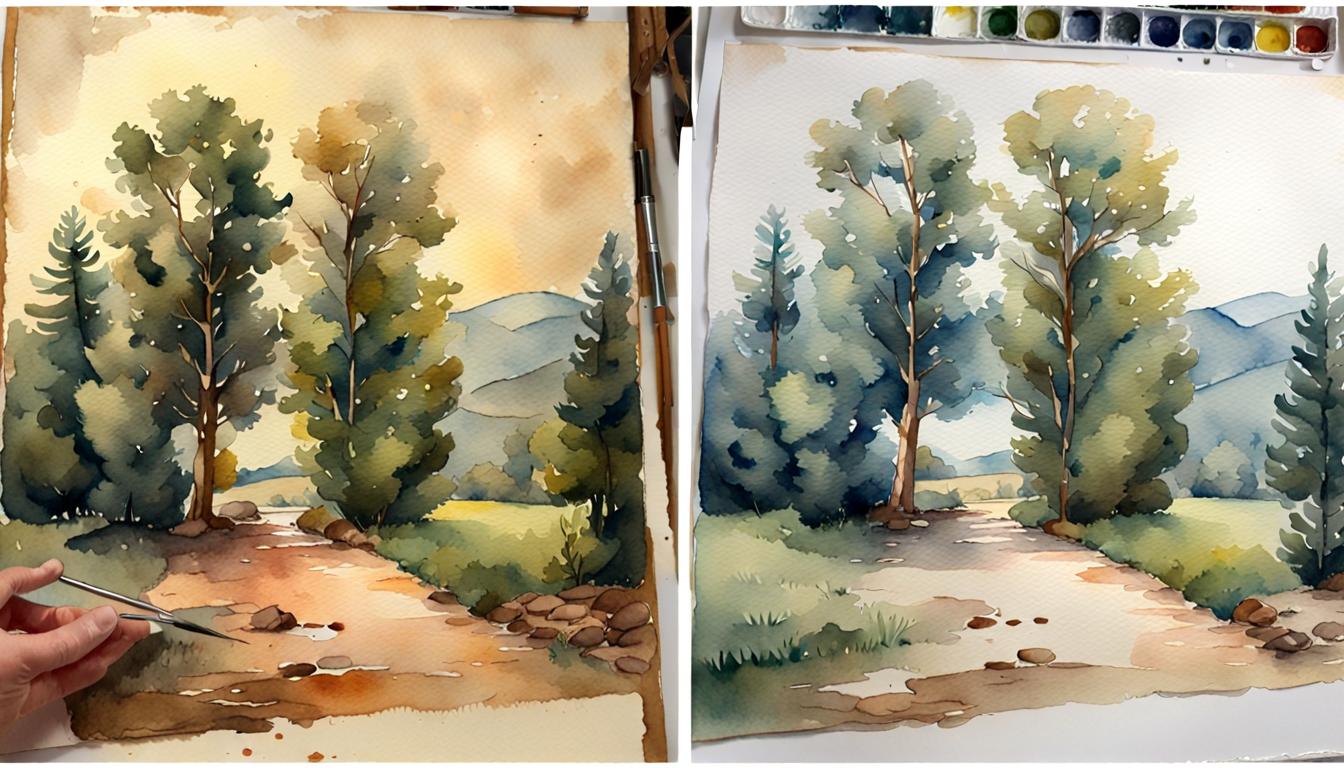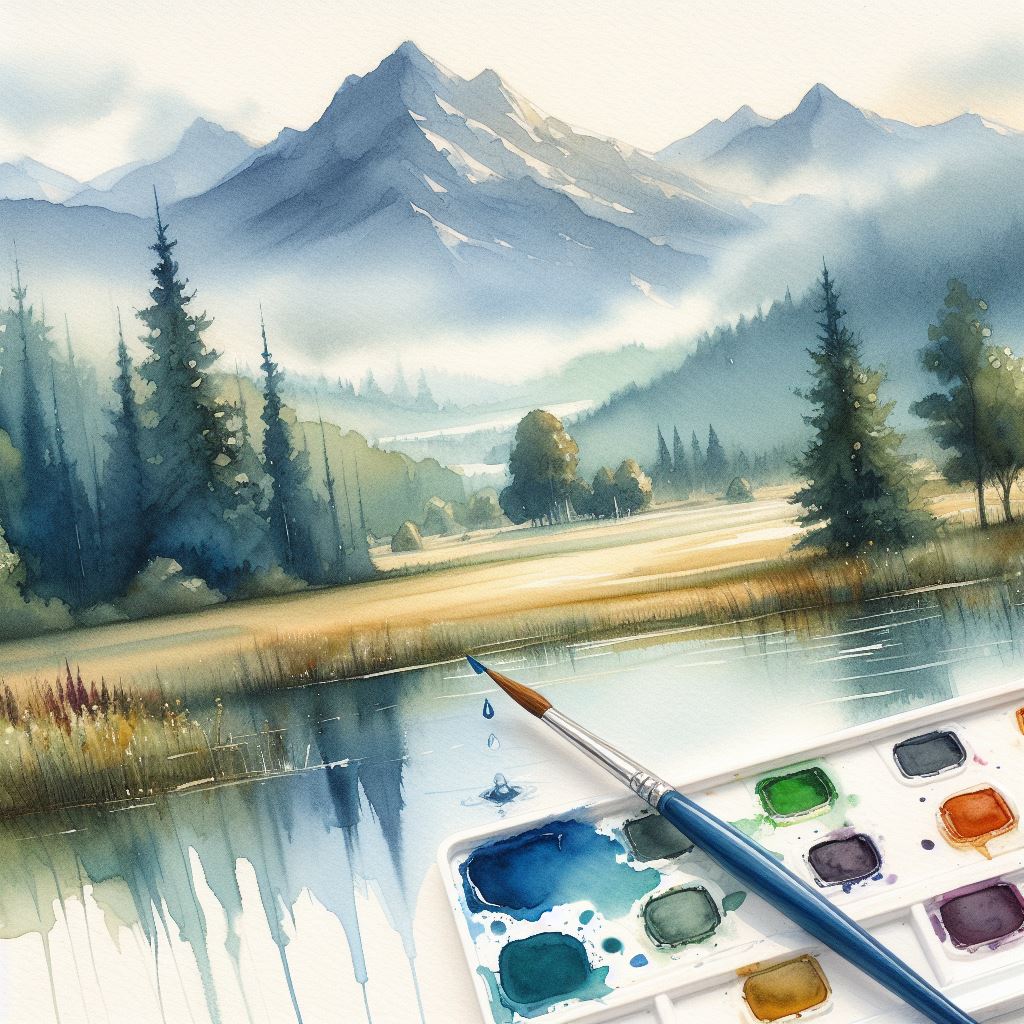A Comprehensive Guide for Beginners and Enthusiasts (with Examples and Solutions)
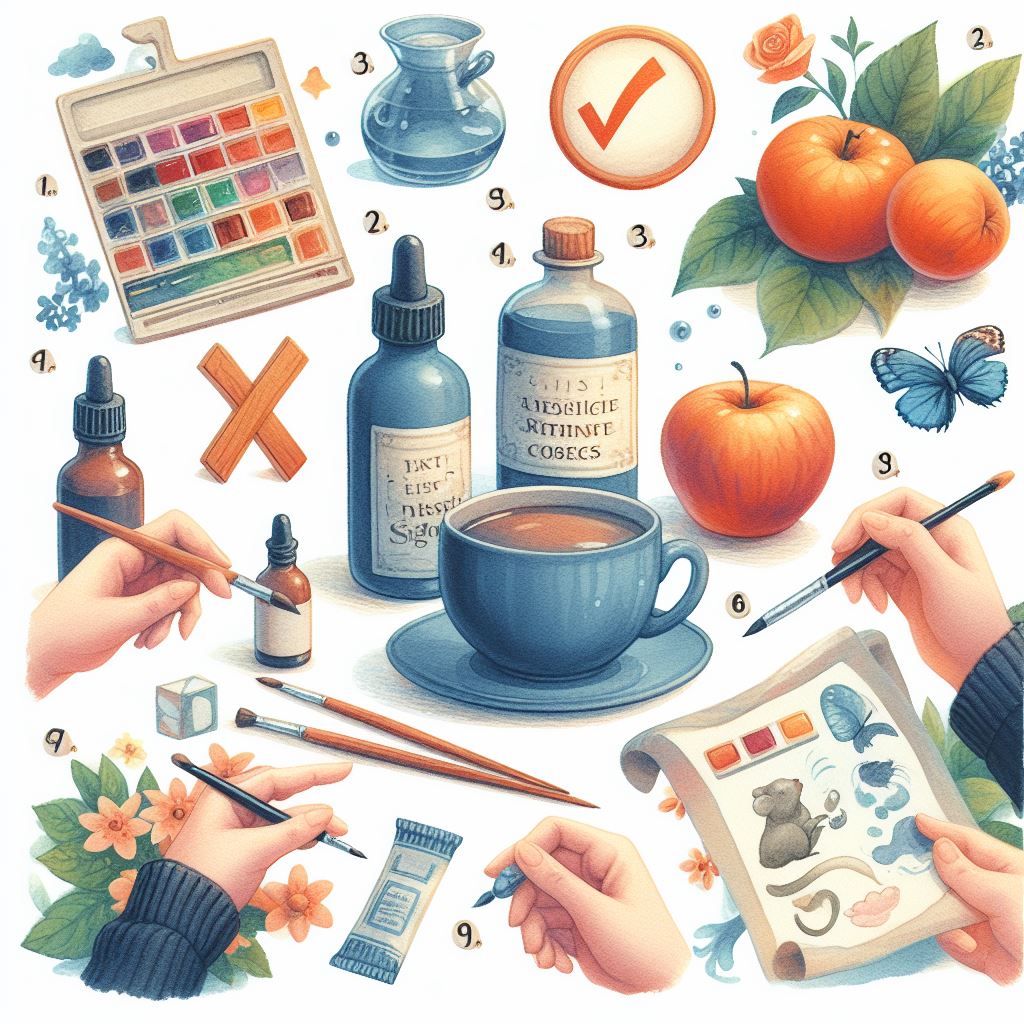
How often have you said, “What are Common Mistakes to Avoid in Watercolor Painting that I must avoid?” In the realm of watercolor painting, the path to mastery is paved with both triumphs and pitfalls. To help you navigate this journey, we present a comprehensive guide to the most common mistakes that can hinder your progress, along with illustrative examples to shed light on their consequences and tips for effective solutions to overcome them.
Not Soaking Your Watercolor Paper Properly
Mistake: Plunging into painting without properly soaking your watercolor paper is akin to building a house on unstable ground. This oversight can lead to buckling and warping, potentially ruining your masterpiece.
Example: Imagine spending hours meticulously painting a detailed landscape, only to have the paper buckle and warp as the paint dries, distorting your composition and rendering your efforts in vain.
Solution:
- Before you unleash your creative strokes, immerse your watercolor paper in a bath of clean water for a few minutes. This allows the paper to absorb the paint evenly, preventing unwanted distortions.
- Use high-quality watercolor paper that is specifically designed to withstand the wet-on-wet techniques commonly used in watercolor painting.
Using the Wrong Brushes
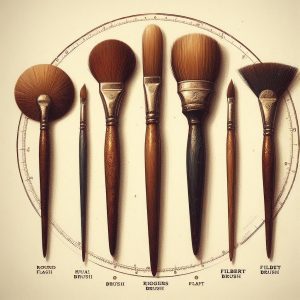
Mistake: Attempting to tame the watercolor medium with cheap or low-quality brushes is like trying to paint with a broom. These brushes lack the finesse and precision needed for delicate watercolor techniques.
Example: Using a stiff, cheap brush can result in uneven strokes, frayed edges, and a lack of control over the paint. Your brushstrokes may appear rough and uncontrolled, detracting from the overall beauty of your painting.
Solution:
- Invest in good-quality watercolor brushes with natural bristles, such as sable or synthetic. These brushes will hold more paint and water, allowing you to create smooth, even strokes and achieve the desired effects.
- Choose brushes with a variety of shapes and sizes to accommodate different techniques and details in your painting.
Overworking the Paint
Mistake: Succumbing to the temptation to constantly rework and overwork the paint is a surefire way to muddy your colors and lose the ethereal transparency that is the hallmark of watercolor painting.
Example: Imagine painting a delicate flower, carefully layering petals and capturing the subtle gradations of color. However, if you overwork the paint, the colors may become muddy and opaque, obscuring the delicate details and losing the sense of luminosity that makes watercolor so captivating.
Solution:
- Allow each layer of paint to dry thoroughly before applying the next. This will prevent the colors from mixing and becoming muddy.
- Work in thin, transparent layers, gradually building up the intensity of color as needed.
- Embrace the fluidity and unpredictability of watercolor. Don’t be afraid to let the paint flow and blend naturally.
Not Diluting Your Paint
Mistake: Applying paint straight from the tube onto your paper is akin to using a marker instead of a paintbrush. Undiluted paint produces harsh, opaque colors that lack the subtle nuances and depth characteristic of watercolor.
Example: Painting a vibrant sunset with undiluted paint may result in a flat, poster-like appearance, lacking the atmospheric depth and sense of light that watercolor is known for. The colors may appear dull and lifeless, failing to convey the beauty and emotion of the scene.
Solution:
- Dilute your paint with water to create transparent washes. Experiment with different dilutions to achieve a range of effects, from delicate glazes to bold, saturated hues.
- Use a spray bottle filled with water to gently mist the paint on your palette. This will help to create smooth, even washes and prevent the paint from drying out too quickly.
Ignoring Color Theory
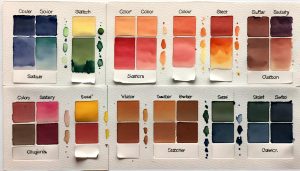
Mistake: Mixing colors haphazardly without understanding color theory is like playing a symphony without knowing the notes. This can result in jarring, unharmonious color combinations that detract from your painting’s overall impact.
Example: Imagine painting a serene landscape with clashing, discordant colors. The sky may be a jarring shade of green, while the trees appear purple. Such a lack of color harmony can create a visually unpleasant and distracting painting that fails to evoke the desired mood or atmosphere.
Solution:
- Familiarize yourself with the color wheel and the principles of color mixing. Learn how to create harmonious color schemes and avoid muddy or garish combinations.
- Experiment with different color palettes to find combinations that resonate with you and suit the mood and subject of your painting.
- Use a color wheel or color chart to help you select complementary and contrasting colors that will create visually appealing compositions.
Not Controlling the Water
Mistake: Failing to control the amount of water you use is like walking a tightrope without a safety net. Too much water can cause colors to bleed and run, while too little water can make the paint dry and chalky.
Example: Painting a detailed portrait with excessive water can result in the colors bleeding into each other, creating a muddy, indistinct mess. On the other hand, using too little water can make the paint appear dry and stiff, lacking the smooth, fluid transitions that are characteristic of watercolor.
Solution:
- Practice controlling the flow of water with your brush. Use a light touch and avoid overloading your brush with water.
- Experiment with different amounts of water to achieve various effects, from soft, ethereal washes to crisp, detailed lines.
- Use a spray bottle filled with water to gently mist the paint on your paper. This can help to create smooth, even transitions and prevent the paint from drying out too quickly.
Neglecting Composition
Mistake: Overlooking the importance of composition is like building a house without a blueprint. A poorly composed painting lacks visual interest and fails to engage the viewer’s attention.
Example: Imagine painting a beautiful flower, but placing it in the corner of the paper with a large expanse of space. Such a composition fails to create a focal point and draw the viewer’s eye into the painting. The flower, despite its beauty, may get lost in the vastness of the space.
Solution:
- Consider the placement of elements, balance, and focal points to create a cohesive and harmonious composition.
- Experiment with different arrangements until you find one that resonates with you and draws the viewer’s eye to the heart of your painting.
- Use leading lines, shapes, and colors to guide the viewer’s gaze and create a sense of depth and movement in your composition.
Rushing the Process
Mistake: Impatience is the enemy of watercolor painting. Rushing the process can lead to mistakes and a less-than-satisfactory final result.
Example: Attempting to paint a complex landscape in a single session may result in a disjointed, unfinished look. The colors may appear muddy and overworked, and the details may lack refinement. Taking the time to allow each layer to dry completely and working methodically will yield a more polished and cohesive painting.
Solution:
- Embrace the slow, meditative pace of watercolor painting. Allow yourself ample time to let each layer dry completely before moving on to the next.
- Work in stages, focusing on one area of your painting at a time. This will help you maintain control and avoid overwhelming yourself.
- Take breaks as needed to rest your eyes and refresh your perspective.
Using Cheap or Low-Quality Paints
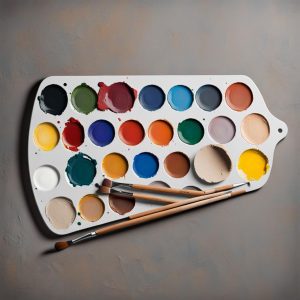
Mistake: Using cheap paints is like trying to build a masterpiece with inferior materials. They often lack vibrancy, transparency, and lightfastness, compromising the quality and longevity of your artwork.
Example: Painting a vibrant still life with cheap paints may result in colors that appear dull and fade over time. The pigments may not be lightfast, causing the painting to lose its vibrancy and deteriorate when exposed to sunlight. Investing in high-quality paints ensures that your artwork retains its beauty and brilliance for years to come.
Solution:
- Invest in high-quality artist-grade watercolor paints. These paints are formulated with superior pigments that produce more vibrant colors and last longer without fading.
- Look for paints that are labelled “lightfast” or “permanent.” This indicates that the pigments are resistant to fading when exposed to light.
- Experiment with different brands and types of watercolor paints to find ones that suit your style and preferences.
Not Experimenting
Mistake: Stagnation is the antithesis of artistic growth. Limiting yourself to familiar techniques and subjects stifles your creativity and prevents you from discovering new possibilities.
Example: Continuously painting the same landscapes or flowers in the same style can lead to a lack of artistic growth and a sense of stagnation. Stepping outside your comfort zone and experimenting with different techniques, color palettes, and subjects can spark new ideas and lead to unexpected breakthroughs in your artistic journey.
Solution:
- Embrace experimentation as a vital part of your artistic journey. Try different techniques, color palettes, and subjects.
- Step outside your comfort zone and challenge yourself to paint something new and unfamiliar.
- Keep a sketchbook or journal to record your experiments and ideas. This can help you track your progress and identify areas where you can improve.
Video: More Examples of Mistakes to Avoid
Nobody is Perfect
Every artist makes mistakes, even the most famous ones! In fact, sometimes mistakes can lead to happy accidents and even more beautiful art. Here are a few famous watercolor artists who famously embraced mistakes:
- J.M.W. Turner: This English Romantic painter was known for his loose, expressive style and his use of light and color. He often used washes of watercolor to create atmospheric effects, and these washes could sometimes bleed or run, creating unexpected shapes and textures. Turner, however, saw these “mistakes” as opportunities to add to the dynamism and energy of his paintings.
- Winslow Homer: This American painter was a master of realist watercolor painting. He often painted scenes of everyday life, such as children playing on the beach or farmers working in the fields. Homer wasn’t afraid to let the watercolor flow and bleed, which gives his paintings a sense of immediacy and life.
- Edward Hopper: This American painter is best known for his oil paintings of lonely diners and deserted streets. However, he also worked extensively in watercolor. Hopper’s watercolors are often more abstract than his oil paintings, and he used washes and drips to create atmospheric effects. He wasn’t afraid to let the paint do its own thing, and some of his most interesting effects are the result of “mistakes.”
- Georgia O’Keeffe: This American painter is best known for her close-up paintings of flowers and bones. O’Keeffe often used watercolor to create soft, delicate effects. She also used washes and drips to create texture and interest. O’Keeffe was a master of using “mistakes” to her advantage, and some of her most famous paintings are the result of happy accidents.
These are just a few examples of famous watercolor artists who made mistakes. The important thing is to remember that mistakes are a part of the creative process, and they can often lead to even better art. So don’t be afraid to experiment and take risks!
Summary of Common Mistakes to Avoid in Watercolor Painting
By avoiding these common pitfalls, learning from the examples provided, and implementing effective solutions, you can embark on a path of artistic growth and create stunning watercolor paintings that capture the beauty and wonder of the world around you.
